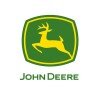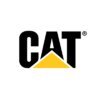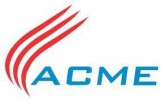Filter interviews by
Greentech Industries Graduate Engineer Trainee (Get) Interview Questions, Process, and Tips
Greentech Industries Graduate Engineer Trainee (Get) Interview Experiences
2 interviews found
I applied via Referral and was interviewed in Sep 2022. There were 2 interview rounds.

(5 Questions)
- Q1. About engineering drawings
- Q2. Other drawing symbols
- Q3. Type of stresses, how does it work?
- Ans.
Stresses can be of various types such as tensile, compressive, shear, etc. and they affect the behavior of materials under load.
Tensile stress occurs when a material is stretched or pulled apart, like when you pull a rubber band.
Compressive stress occurs when a material is squeezed or compressed, like when you push a spring.
Shear stress occurs when a material is twisted or sheared, like when you cut a piece of paper wi...
- Q4. Type of heat transfers
- Ans.
There are three types of heat transfer: conduction, convection, and radiation.
Conduction is the transfer of heat through a material without any movement of the material itself.
Convection is the transfer of heat through a fluid (liquid or gas) due to the movement of the fluid.
Radiation is the transfer of heat through electromagnetic waves, such as from the sun or a fire.
Examples of conduction include touching a hot stov...
- Q5. Tell me about your project briefly?
Interview Preparation Tips
I applied via Campus Placement and was interviewed in Jan 2021. There were 3 interview rounds.
Interview Questionnaire
6 Questions
- Q1. Draw mild steel stress and strain diagram.
- Ans.
Mild steel stress-strain diagram shows the relationship between stress and strain.
Mild steel has a linear elastic region followed by a plastic region.
The yield point is where plastic deformation begins.
Ultimate tensile strength is the maximum stress a material can withstand.
The fracture point is where the material breaks.
The area under the stress-strain curve represents the energy absorbed by the material.
Mild steel ha...
- Q2. What is your project, explain?
- Q3. Tell me about your self.
- Ans.
I am a recent graduate with a degree in engineering, eager to start my career and apply my knowledge and skills in a practical setting.
Recent graduate with a degree in engineering
Eager to start my career and apply my knowledge and skills
Strong problem-solving and analytical skills
Experience in working on engineering projects during my studies
Excellent communication and teamwork abilities
- Q4. Newton's laws.
- Q5. Formulaes of stress, strain, yield strength, troque.
- Ans.
The stress, strain, yield strength, and torque are important concepts in engineering.
Stress is the force per unit area applied to a material.
Strain is the deformation or change in shape of a material due to stress.
Yield strength is the maximum stress a material can withstand without permanent deformation.
Torque is the rotational force applied to an object.
- Q6. Breaking points, high temperature of metals.
Interview Preparation Tips
Top trending discussions






Interview questions from similar companies

Graduate Engineer Trainee (Get) Interview Questions & Answers
TechnipFMCposted on 30 May 2017
I appeared for an interview in Oct 2016.
Interview Preparation Tips

Graduate Engineer Trainee (Get) Interview Questions & Answers
John Deereposted on 23 Sep 2017
I appeared for an interview in Aug 2017.
Interview Questionnaire
2 Questions
- Q1. Project based questions, dbms questions (join),operating system questions ,data structure concepts and questions ,language you are master of questions(mine was java) and mind busting questions to check ho...
- Q2. Strength,weakness, why this company, what is your dream project,and etc.
Interview Preparation Tips
Experience: An online test was held in our college.it included 3 sections technical section as well as aptitude section which included some of the language (English ) also.
Tips: Tips would be not to switch the window coz you will be disqualified if you do so and try to answer the questions systematically in my opinion it will be considered during assessment of your test.
Duration: 45 minutes
Total Questions: 45
Round: Technical Interview
Tips: Be confident. Even you are not able to answer their questions just say sorry sir I doNt know this question don't act like a dumb they assess you on how confidently you answer their questions .
Round: HR Interview
Tips: Be confident,try avoiding "no" word during iv,answer positively,do not act rude to your interviewer, do make your point if you feel like you want to oppose them but maintain a smile and answer positively and while answering donot be rude at any point.
Skills: Confidence Levels Of Students, Reflexive to their questions , Knowledge About Database Managements Systems, Data Structures
College Name: Mody University Of Science And Technology, Sikar

Graduate Engineer Trainee (Get) Interview Questions & Answers
John Deereposted on 23 Sep 2017
I appeared for an interview in Aug 2017.
Interview Preparation Tips
Experience: Level of aptitude questions was average there were questions from ratio proportion geometry etc.In technical questions from DBMS ,java ,data structure was asked
Duration: 50 minutes
Round: Technical Interview
Experience: In technical interview interviewer asked questions from every subject .They also asked questions from my project
Round: HR Interview
Experience: They ask to give introduction and from introduction they asked questions
College Name: Mody University Of Science And Technology, Sikar

Graduate Engineer Trainee (Get) Interview Questions & Answers
Sigma Electric Manufacturing Corporationposted on 16 May 2021
I applied via Naukri.com and was interviewed in Jun 2020. There were 4 interview rounds.
Interview Questionnaire
13 Questions
- Q1. They asked me lot of technical questions on java technology and sql
- Q2. What is oops concepts of java and its type
- Ans.
Java OOPs concepts include inheritance, polymorphism, encapsulation, and abstraction.
Inheritance allows a class to inherit properties and methods from another class.
Polymorphism allows objects to take on multiple forms and behave differently based on the context.
Encapsulation hides the implementation details of a class and only exposes necessary information.
Abstraction focuses on the essential features of an object and...
- Q3. What is sql aggregation function
- Ans.
SQL aggregation functions perform calculations on multiple rows of a single column of a table.
Aggregation functions include COUNT, SUM, AVG, MAX, and MIN.
They are used with the SELECT statement to retrieve data from a table.
Examples: SELECT COUNT(*) FROM customers; SELECT AVG(price) FROM products;
Aggregate functions can also be used with the GROUP BY clause to group data by one or more columns.
- Q4. What is join and it's types
- Ans.
Join is a SQL operation that combines rows from two or more tables based on a related column between them.
Join is used to retrieve data from multiple tables in a single query.
Types of join include inner join, left join, right join, and full outer join.
Inner join returns only the matching rows from both tables.
Left join returns all the rows from the left table and matching rows from the right table.
Right join returns al...
- Q5. How to write join queries
- Ans.
Join queries are used to combine data from two or more tables based on a related column.
Use the JOIN keyword followed by the name of the table you want to join.
Specify the columns you want to select from each table.
Use the ON keyword to specify the column(s) that the tables should be joined on.
There are different types of joins: INNER JOIN, LEFT JOIN, RIGHT JOIN, and FULL OUTER JOIN.
Example: SELECT customers.name, orde...
- Q6. What is sql and how to use
- Ans.
SQL is a programming language used to manage and manipulate relational databases.
SQL stands for Structured Query Language
It is used to create, modify, and query databases
Common commands include SELECT, INSERT, UPDATE, and DELETE
Example: SELECT * FROM customers WHERE age > 18;
- Q7. What is constructor and how to use and explain it
- Ans.
A constructor is a special method used to initialize objects in a class.
Constructors have the same name as the class they belong to.
They are called automatically when an object is created.
Constructors can take parameters to set initial values.
They can be overloaded to provide multiple ways of initializing objects.
- Q8. What is class and object and different between method overriding and method overloading
- Ans.
Class and object are fundamental concepts in object-oriented programming. Method overloading and method overriding are two ways to achieve polymorphism.
A class is a blueprint or template for creating objects that encapsulate data and behavior.
An object is an instance of a class that has its own state and behavior.
Method overloading is when multiple methods in a class have the same name but different parameters.
Method o...
- Q9. What is exception handling and how to use
- Ans.
Exception handling is the process of handling errors and unexpected events in a program.
It involves identifying and anticipating potential errors
It provides a mechanism to handle these errors gracefully
It helps prevent program crashes and improves user experience
Examples include try-catch blocks, throw statements, and finally blocks
- Q10. What is multithreading and its method like wait method
- Ans.
Multithreading is the ability of a CPU to execute multiple threads concurrently. Wait method is used to pause a thread.
Multithreading allows for better utilization of CPU resources
Wait method is used to pause a thread until a certain condition is met
Other methods like notify and notifyAll can be used to wake up waiting threads
Multithreading can improve performance in applications that require parallel processing
Java pr...
- Q11. What is JSP and servlet and explain it
- Ans.
JSP and Servlet are Java technologies used for creating dynamic web pages and handling HTTP requests and responses.
JSP stands for JavaServer Pages and is used for creating dynamic web pages that can interact with server-side data and logic.
Servlet is a Java program that runs on a web server and handles HTTP requests and responses.
JSP and Servlet work together to create dynamic web applications that can generate HTML, p...
- Q12. What is sql sub query and explain it
- Ans.
SQL subquery is a query within another query used to retrieve data from one or more tables.
Subqueries are enclosed in parentheses and placed within the WHERE or HAVING clause of the outer query.
They can be used to filter, sort, or aggregate data based on the results of the subquery.
Subqueries can also be used in the SELECT statement to retrieve a single value or set of values.
Example: SELECT * FROM employees WHERE depa...
- Q13. What is complex query and how to write
- Ans.
A complex query is a query that involves multiple tables, conditions, and/or functions.
Start by identifying the tables involved in the query
Determine the conditions that need to be met using WHERE clause
Use JOIN to combine tables if necessary
Use aggregate functions like COUNT, SUM, AVG, etc. to perform calculations
Use subqueries to break down complex queries into smaller parts
Test the query and refine as necessary
Interview Preparation Tips
Skills evaluated in this interview

I applied via Campus Placement and was interviewed before Oct 2021. There were 4 interview rounds.

Basic aptitude and core departments questions will be asked
(1 Question)
- Q1. Mainly content in the resume will be focused
(1 Question)
- Q1. Final confirmation based on personality test
Interview Preparation Tips

Graduate Engineer Trainee (Get) Interview Questions & Answers
John Deereposted on 15 Sep 2022
I applied via Campus Placement and was interviewed in Aug 2022. There were 2 interview rounds.
Quantitative
English
computer science MCQ
(2 Questions)
- Q1. Explain OOPS concepts you have to explain all the concepts with examples. took me 15 to 20 min to answer.
- Q2. Explain how you write a c++ code and explain its execution
- Ans.
C++ code is written using a text editor and compiled using a compiler. The compiled code is then executed.
Start by writing the code in a text editor like Visual Studio Code or Sublime Text
Save the code with a .cpp extension
Compile the code using a compiler like GCC or Clang
Execute the compiled code in a terminal or command prompt
Debug the code using a debugger like GDB or Visual Studio Debugger
Interview Preparation Tips
Skills evaluated in this interview

Graduate Engineer Trainee (Get) Interview Questions & Answers
John Deereposted on 7 Jun 2024
It was aptitude plus computer fundamentals which include oops, dbms, os and some questions based on algorithms
(2 Questions)
- Q1. Tell me what do you know about john deere
- Q2. What is one subject you would never want to study again

Graduate Engineer Trainee (Get) Interview Questions & Answers
John Deereposted on 6 Sep 2023
I applied via Campus Placement and was interviewed in Aug 2023. There were 3 interview rounds.

Aptitude and english
(2 Questions)
- Q1. Question based on CV
- Q2. C, python, basic electronics
Greentech Industries Interview FAQs
Tell us how to improve this page.
Greentech Industries Interviews By Designations
- Greentech Industries Graduate Engineer Trainee (Get) Interview Questions
- Greentech Industries Trainee Operator Interview Questions
- Greentech Industries Trainee Quality Engineer Interview Questions
- Greentech Industries Field Worker Interview Questions
- Greentech Industries Admin Manager Interview Questions
- Greentech Industries Production Associate Interview Questions
- Greentech Industries Employee Relations Executive Interview Questions
- Greentech Industries Diploma Mechanical Engineer Interview Questions
- Show more
Interview Questions for Popular Designations
- Graduate Apprentice Trainee Interview Questions
- Graduate Apprenticeship Trainee Interview Questions
- Graduate Trainee Interview Questions
- Graduate Engineer Interview Questions
- Production Graduate Engineer Trainee Interview Questions
- Graduate Student Interview Questions
- Graduate Apprentice Interview Questions
- Post Graduate Engineer Trainee [pget] Interview Questions
- Show more
Greentech Industries Graduate Engineer Trainee (Get) Interview Process
based on 2 interviews
Interview experience
Graduate Engineer Trainee (Get) Interview Questions from Similar Companies

Greentech Industries Graduate Engineer Trainee (Get) Reviews and Ratings
based on 15 reviews
Rating in categories
|
Graduate Engineer Trainee (Get)
81
salaries
| ₹1.5 L/yr - ₹4 L/yr |
|
Team Lead
63
salaries
| ₹2.1 L/yr - ₹5.6 L/yr |
|
Engineer
41
salaries
| ₹2 L/yr - ₹4.3 L/yr |
|
Junior Engineer
39
salaries
| ₹1.5 L/yr - ₹4.2 L/yr |
|
Assistant Manager
22
salaries
| ₹4.7 L/yr - ₹9.5 L/yr |

John Deere

KONE

Caterpillar Inc

Sigma Electric Manufacturing Corporation
- Home >
- Interviews >
- Greentech Industries Interview Questions >
- Greentech Industries Graduate Engineer Trainee (Get) Interview Questions













